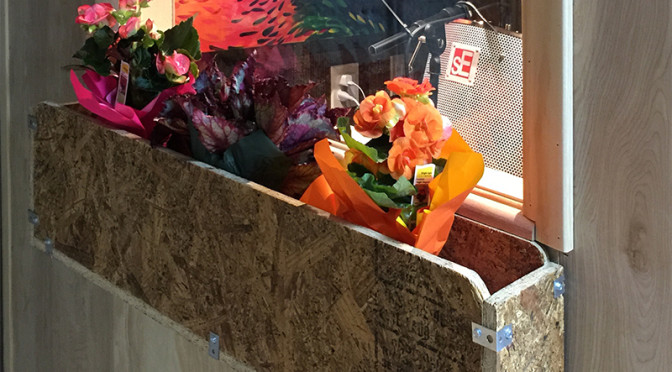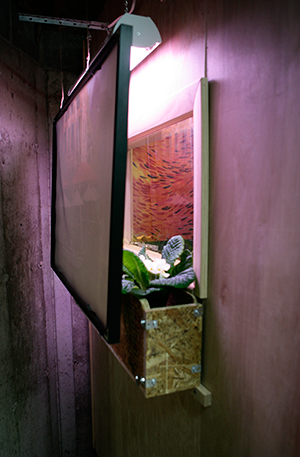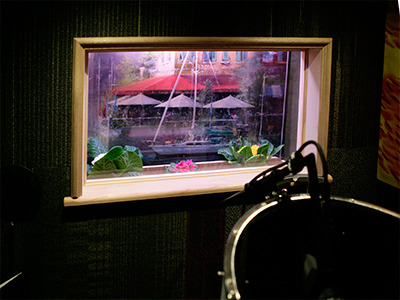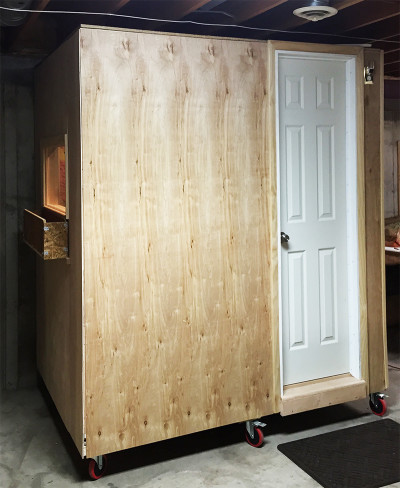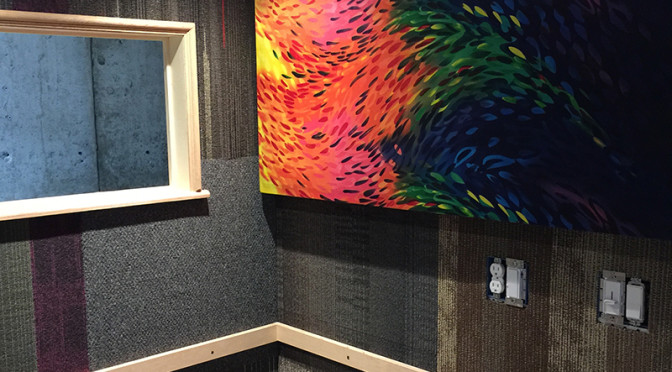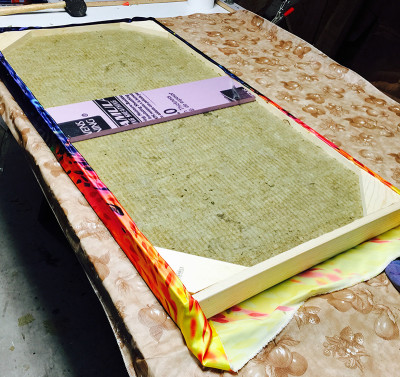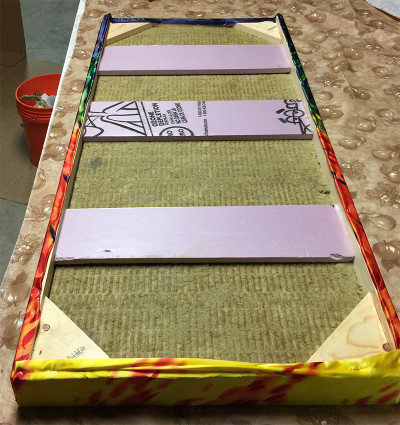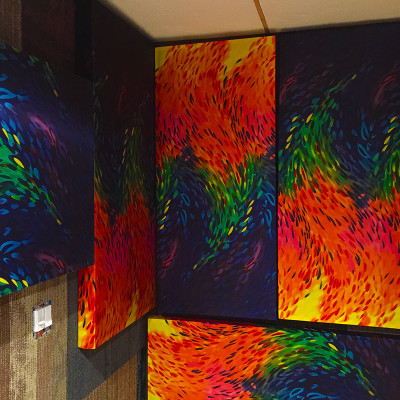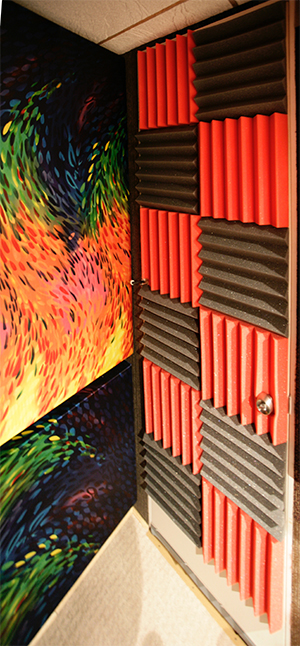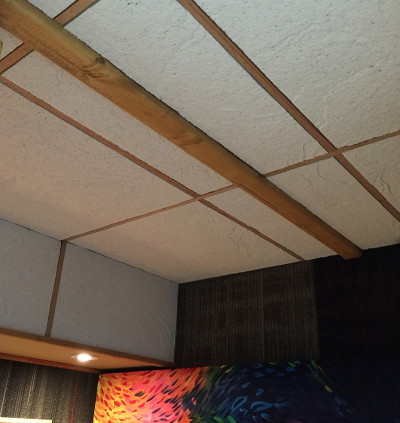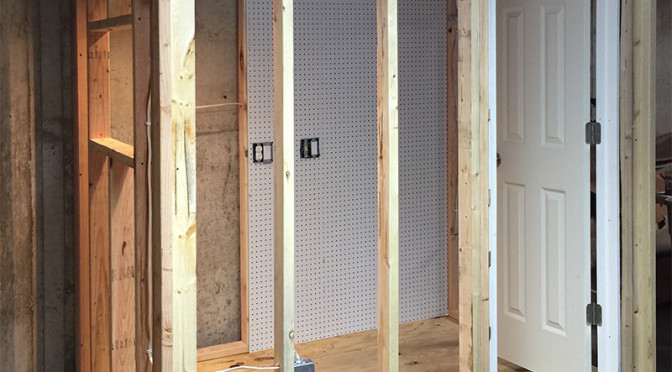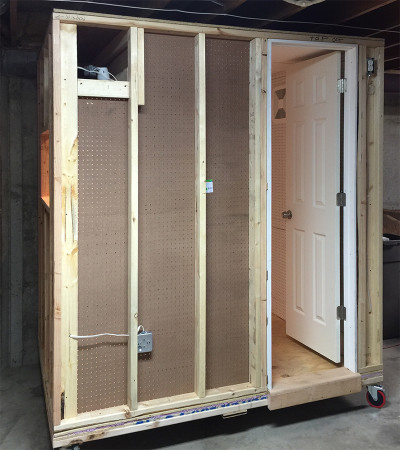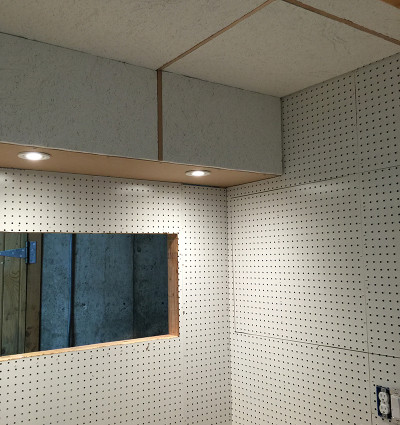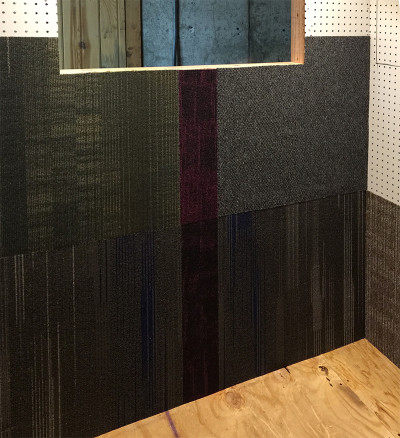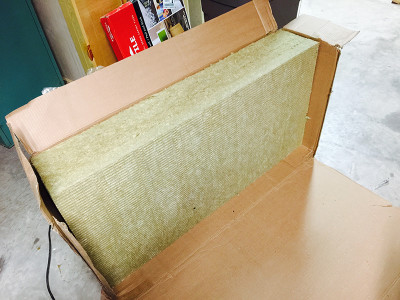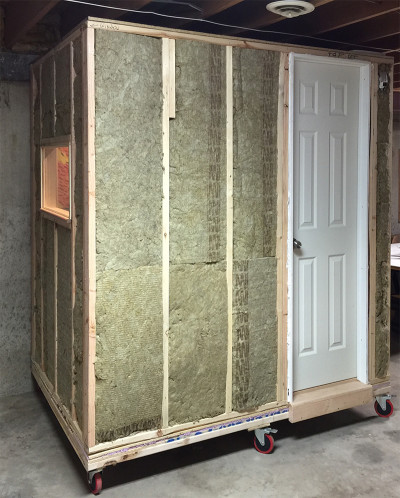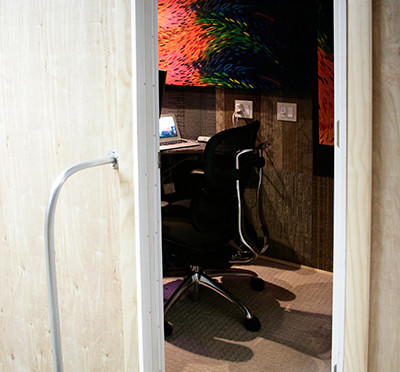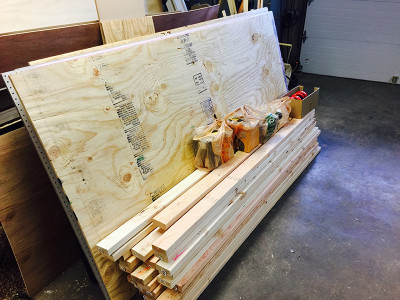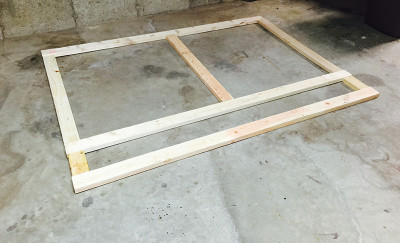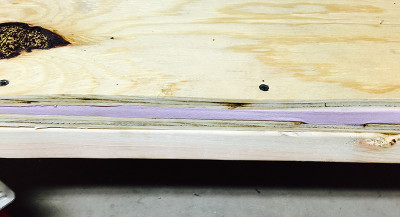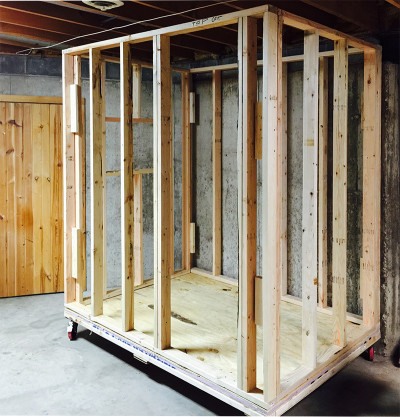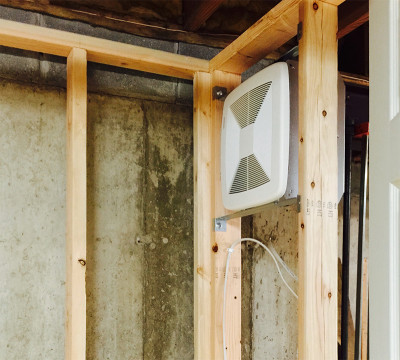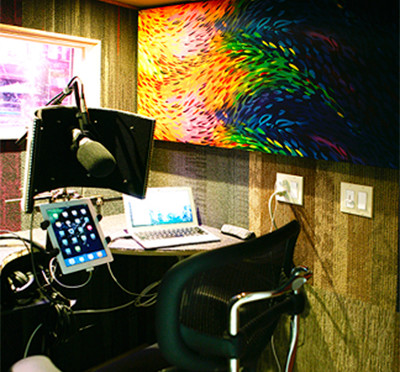Now for final little touches which make this studio charming from the inside or outside.
I wanted a pleasant scene, visible from the window since the narrator, or singer, faces that direction. Anything will do, other than a view of grey concrete. I built a small flower box, attached to the outside and then quickly found that I needed a grow light. I added a fluorescent grow light and a changeable view by hanging an inexpensive framed poster on the outside.
But, its the view from the inside that matters! Now Janel can be in Paris or in the Swiss Alps or anywhere (sort of, at least).
On the exterior, I used 1/4” plywood underlayment, reverse side out, and left it unfinished. Lastly, adding the trim and a small step and hand rail. I used a small night-light on the outside by the door, lit only when the interior lights are on. A signal to not rashly open the door during narration.
Not pictured is a reverse electrical plug like found in marine hardware suppliers, where power can be supplied via a conventional extension cord. This is mounted on the fan exhaust side of the studio. The last steps were to add a a curved desk top, the carpet underlayment and the carpet.
At last, finished! Total cost thus far was under $1000, and that was using new materials. You can do better.
Any regrets? Sure. I should have added more electrical outlets. You can always use more, and I should have included a couple of 1/4” phone jacks for outside communication, just in case. But overall, I’m happy, my narrator is happy and my singer is ecstatic.
Next time, I’ll discuss hardware and software.
Alexander Francis

